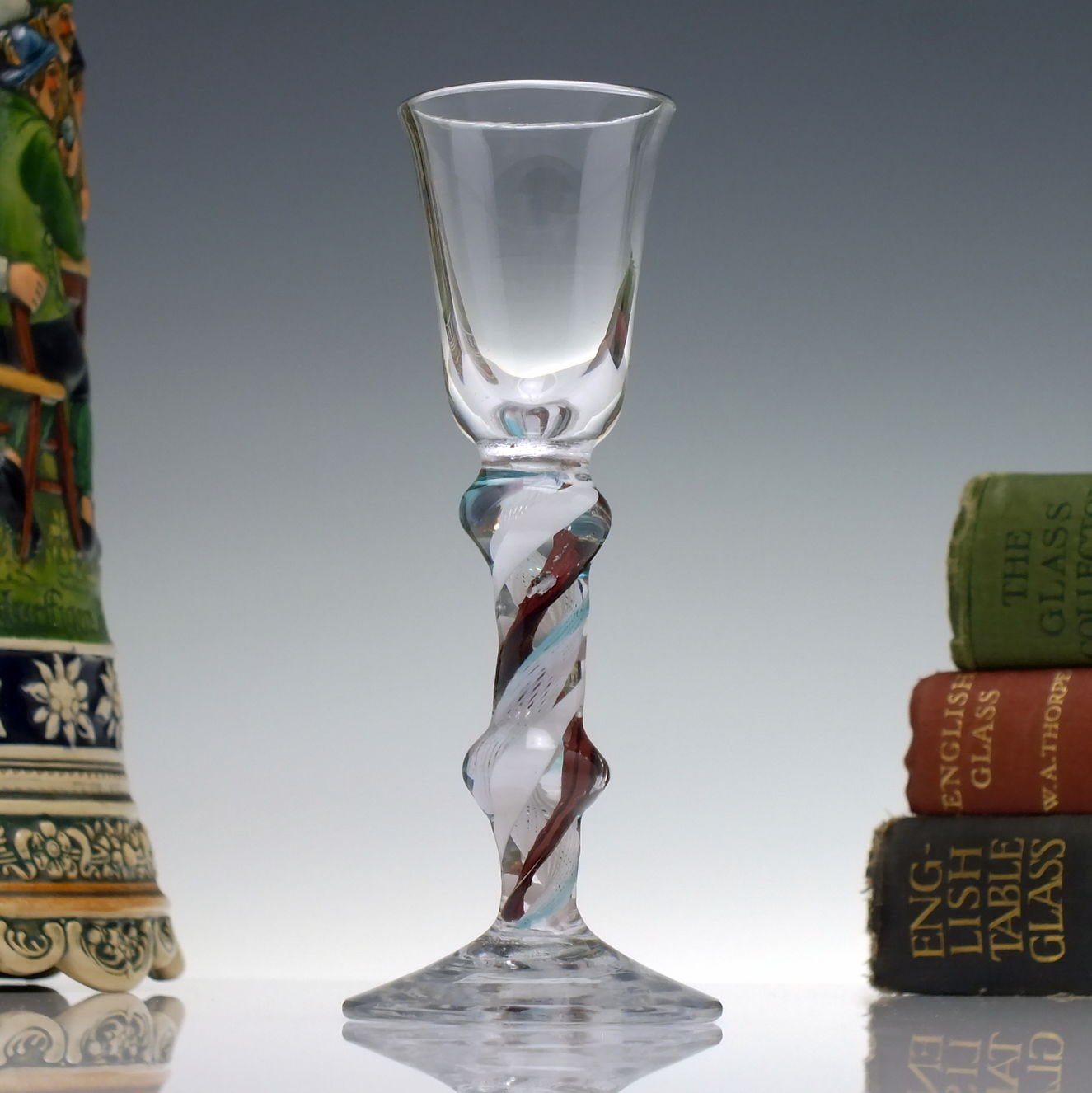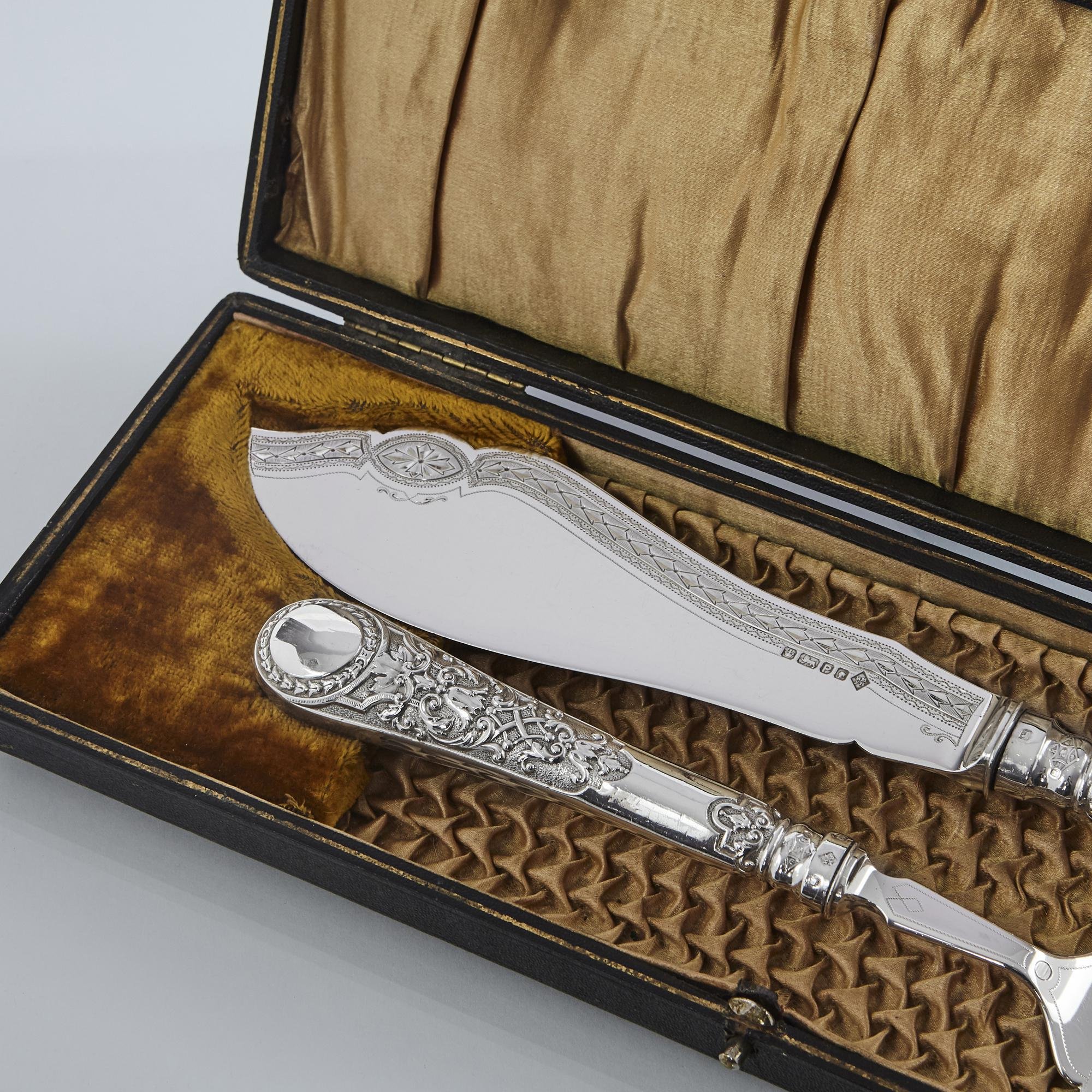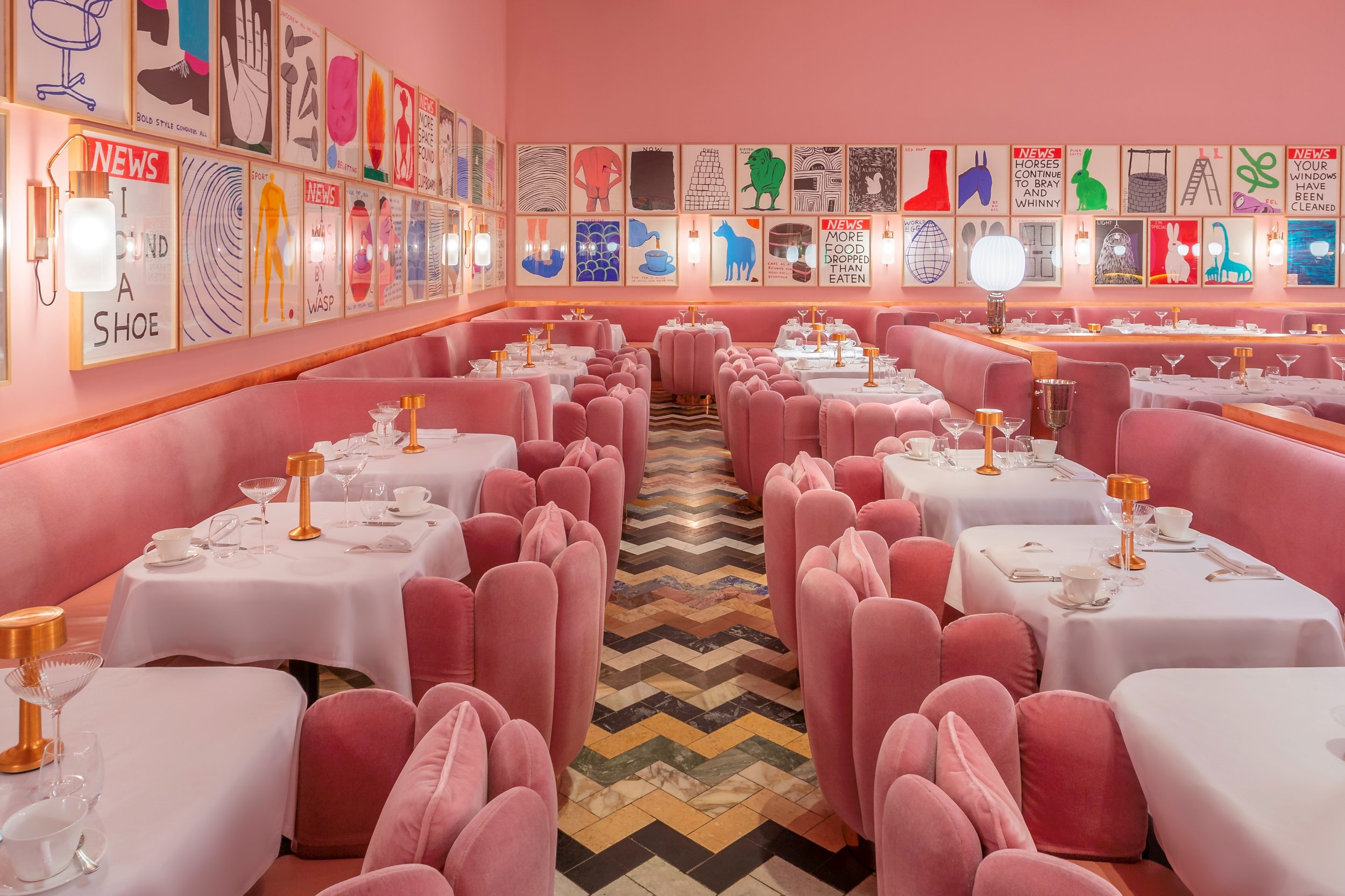Collecting Glassware
12 May 2022
Glassware may be fragile but collecting it can be as simple as starting.
Poppy McKenzie Smith
Poppy McKenzie Smith writes for The Telegraph about old, fast cars and spends most of her time at auctions encouraging other people to buy them.
A Late Regency of Early Victorian Green Wine Glass, England, c.1835.
Image courtesy of Scottish Antiques.
When you are as clumsy as I am, collecting glass seems a fool’s errand. My ham fists are better suited to metal lumps of automotive history than an enchantingly engraved goblet, but while the former may be more robust, the latter is certainly more affordable. The beauty of glass collecting does not just lie in the elegance of the object, but also in its alluring starting prices. It goes without saying that you can spend tens of thousands of pounds at auction on exceptionally rare pieces, but the keen amateur can pick up a glorious Victorian champagne flute for the same price as a bottom-end John Lewis number.
The only downside of such an affordable starting point is that beginners can feel wracked by the agony of choice. Those starting out a collection of the likes of contemporary art, wine, or watches tend to have their wings initially clipped by pesky budget, but £150 in the glass world can buy you a fine example of almost anything.
As ever, the best advice is to buy something you like. It seems obvious, but if you are going to fill your cabinets with impractical objects (experts don’t recommend bringing your collection out for a dinner party), they should at least bring you joy. The beauty of glass can lie in its ornate decoration, in its unusual structure or in its rather intriguing design. It is an art which spans centuries and takes endless forms, so finding a niche which intrigues you should be a simple pleasure.
Finding a niche is precisely what Jim Peake, glass specialist at Bonhams and trustee of the Glass Society, recommends for starting your collection. “Sticking to one field can help narrow options down, be it colourful paperweights, delicate scent bottles or heavy English balusters.” Learning about a particular maker or style will allow you to recognise good pieces for either investment or pleasure – unlike with silver, glass rarely has any signature or hallmark which can make it tricky to identify the origins of a piece. Only by building up a solid knowledge of your niche are you likely to spot the car boot sale gems.
Chipped rims and flaky paintwork aside, what should the nascent glass collector be wary of? Peake explains that condition and craftsmanship trump age in this instance. Roman glass can be beautiful to behold, but they cracked mass production long before Henry Ford, and as such prices are relatively low for a delicate centuries-old item. Another more important pitfall in collecting very old pieces of glass, particularly from the Middle East, is traceability. There have been examples of looted items being sold to fund terrorist activities, so steer clear of anything which does not have known, proven provenance. Becoming embroiled in complex legal battles does rather take the sheen off the joy of collecting, just ask The British Museum.
Tracing and identifying glass is difficult, but not impossible, and can be an enjoyable puzzle to untangle. Pontil marks are small scars which show where the pontil rod was broken off in the production of hand-blown glass, which tends to be more desirable than that created in a mould. Creators often used motifs in lieu of a signature – think Robert Thomas’s little mouse – which can be essential in identification. The Beilby family created extraordinary enamelled glass in the 18th century, but its striking style was widely imitated by lesser craftsman across England. Very few pieces were signed, but William Beilby was known to include a butterfly on his hand-made pieces. Spotting the hidden butterfly at a car boot sale could be the difference between a profit of 25p and a profit of 25 grand.
18th Century Colour Twist Wine Glass c.1760, England. For sale, £2,900.
Image courtesy of Exhibit Antiques.
A superb and very rare 18th-century opaque twist wine glass with a lipped round funnel bowl above a colour twist stem featuring two pairs of spiral tapes each an independent colour, red, mint green, faint lilac and white. Conical foot with a snapped pontil. A very rare colour stem combination.
As with any collecting sphere, there are big names commanding big prices. Confirmed pieces from the likes of Beilby, Ravenscroft and Dino Martens can be offered with quite substantial damage or restoration and achieve twice as much as a generic piece of comparable style and period. A Beilby goblet with a foot missing sold for £13,000 in 2006 and then £32,000 just four years later, and the most valuable Ravenscroft pieces are often the ones with the greatest ‘crizzling’ patina – it serves to prove that it is one of his earliest works.
It is unlikely that a first-time buyer will be able to stretch to a named piece, but that doesn’t diminish the fun that can be had building a collection. Unlike many art forms, whimsy and novelty are hugely desirable in the glass world and can prove both fun to own and a solid investment. Trick glasses and puzzle jugs make for the ultimate drinking games, and are admired for their novelty and craftsmanship. Likewise, glass animals can make for a wonderful collection. In the 1970s, Wedgewood produced a colourful menagerie of birds, rabbits and elephants which today can be picked up for about £50 – they would make a wonderful introduction for (steady-handed) children in to the world of collecting.
In a world where minimalism appears to be eclipsing all other styles, swathes of collectable glass remain reassuringly bold and ornate. Jim Peake confesses to a particular weakness for façon de venise glass, the 16th and 17th style which saw glassmakers from across Europe mimicking the unrivalled mastery of the Venetian workshops. The twisting style lends the glass a beguiling fluidity, and examples can be adorned with vibrant colour and embellishment. The masterful craftsmanship in pieces of this style unsurprisingly has a price tag to match, and it appears to remain steadfast in its popularity among collectors.
Not that the glass market is without its fluctuations. Rare antique paperweights used to fetch up to £20,000, but now hover around the £5000 mark – the digital age is killing off more than just the printing press. 20th century European glass is having a well-deserved boom, with Czech, German and Scandinavian artists becoming increasingly sought-after for their striking lines and rich jewel colours not dissimilar to Roman pieces hundreds of years their senior.
Once you have discovered your favourite style, it is wonderfully simple to begin collecting. Beautiful glass pieces can be picked up at flea markets, from dealers and auction houses alike, and there are some fantastic sellers on the likes of Etsy and Ebay. As with any collectable, follow the three cardinal rules: inspect before purchase, buy what you love, and whatever you do, don’t drop it.































